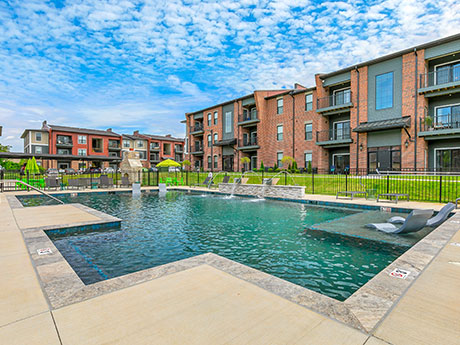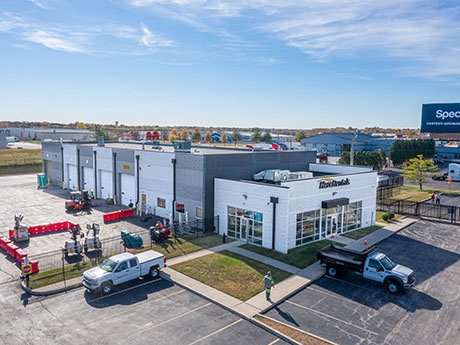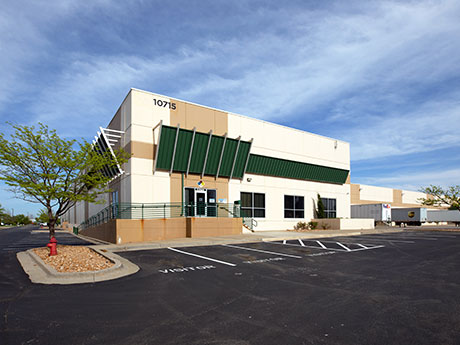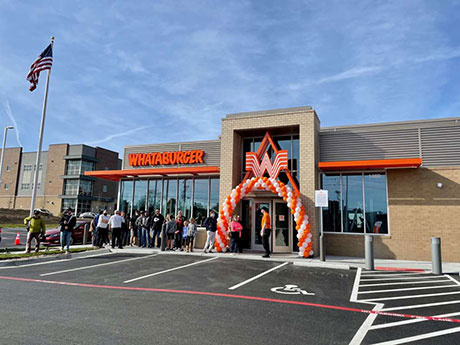By Chris Armer, Hoefer Welker People who call the Kansas City metropolitan area home know it’s a desirable place to live. From the robust job market and vibrant arts scene to its rich history and, of course, stellar sports teams, the Kansas City metro area attracts a diverse group of people. Kansas City is evolving and so are its housing needs. In recent years, the demand for multifamily development in Kansas City has grown, driven by a range of factors. Mass retirements and flexible work arrangements are shifting priorities, while the housing shortage and rising interest rates are sending prospective homeowners on the search for attractive alternatives. The multifamily housing trend stands to gain momentum, creating a space for discerning real estate and architecture firms with development expertise to pave the way in an evolving housing market. The great shuffle Much has been said about the Great Resignation, but the COVID-19 pandemic didn’t only affect young and midlife workers who left their jobs to pursue higher-paying and more meaningful employment. It also hastened the Great Retirement, a massive wave of baby boomers leaving the workforce, many of them earlier than planned. Now those homeowners are selling their suburban single-family …
Market Reports
Fueled by a trifecta of favorable cap rates, an underserved apartment market and sharp increases in market demand, St. Louis is starting to gain momentum with the potential to become a new multifamily hotspot. As investors and developers take note, capital that typically has been focused in higher growth markets on the coast and cities like Chicago and Nashville is starting to flow into the Gateway City. The fruit of these investments is now coming to market. Despite 20-plus percent increases in construction costs, 24 percent more units — 2,057 total — were built in 2021 compared with St. Louis’ five-year annual average. Nearly 4,000 additional units are under construction in the St. Louis region. Population, personal income and job growth are the key economic drivers of multifamily unit demand. In 2020 and 2021, all three of those markers are finishing on the upside in St. Louis after pandemic dips. Employment growth is particularly promising. After slight employment declines over the last five years, St. Louis employment has grown at an average annual rate of 2.7 percent for the last four quarters. CBRE forecasts positive growth of 2 percent for the next two years and 0.8 percent for the next …
This past year, many commercial real estate sectors and geographies that had been affected by the initial impact of pandemic-induced shutdowns demonstrated improvement. Across Missouri, we saw very robust levels of sales activity, as well as new construction and development — with more than $2.4 billion in overall commercial real estate sales volume through the end of third-quarter 2021. Although statewide growth was reported across all property types and sectors, industrial was especially strong, while retail emerged with slightly less consistency, but was positive nonetheless. The forecast for 2022 is bright, especially as retailers announce expansion plans and developers break ground on new projects. St. Louis is central to growth As an important secondary U.S. market, St. Louis and the surrounding areas are experiencing high levels of demand and activity. In the first three quarters of 2021, the St. Louis market reported $1.7 billion of overall commercial real estate sales volume, representing more than 70 percent of statewide activity. These statistics illustrate the sentiment of today’s active buyers who agree that St. Louis is a stable and attractive market for investment. Within the metro area, St. Charles County stands out as one of the fastest-growing counties in the country, reporting …
2021 was a historic year for Kansas City industrial real estate. The local market size eclipsed 300 million square feet of space, representing the 16th-largest industrial market in the U.S. Class A building inventory is nearly 44 million square feet, ranking 15th in the nation. Of the industrial building inventory, 14.4 percent is Class A, ranking ninth-highest in the country, suggesting the inventory that we have is quality compared with other U.S. markets. Capital markets are firm influencers with soft voices. Nationally, the amount invested is a record high. Rental rate growth is at an all-time high and investors are confident that this growth will sustain. While you may not read about where capital is being deployed, the institutional development and investment activity provide the output to see where institutions have comfort. Cap rates in the Kansas City area broke records and saw compression in the last year of 50 to 150 basis points depending on the asset class. This is a result of investors seeking return and believing in the long-term strength of tier II industrial markets and yield premium afforded in these markets compared with gateway cities. Well-positioned assets traded with cap rates in the low to …
To the surprise of many in the Kansas City retail sector, the end of 2021 looked much different than most anticipated when 2021 began. As uncertainty buzzed through the retail world, the flurry of 2021’s real estate activity was a welcome surprise. Retailers who embraced technology and adapted to the changing circumstances of today’s world were able to reap the benefits 2021 offered. As consumers took advantage of post-lockdown freedoms, brick-and-mortar retailers experienced a surge in sales volume. Throughout 2021, many national retailers and local Kansas City owners reported volumes exceeding 2019 pre-COVID levels. It’s comforting to report that retail leasing and sales continue to be strong, and overall Kansas City remains consistent in attracting retail business during these uncertain times. One of the most recognizable transformations in retail is the way in which technology seamlessly connects e-commerce and brick-and-mortar stores. Consumers can now use technology to satisfy their desire for the contactless fulfillment of their order, browse local inventory at grocery and retail stores for immediate pickup and grocery shop without entering the store. This list will continue to grow as acceptance of the technology accelerates. Another noticeable retail alteration is the addition of drive-thrus as well as …
World and domestic markets are constantly recalibrating as the global supply chain continues to see a disruption from the COVID-19 pandemic. It has never been more clear though just how important freight logistics and a healthy supply chain are to keep the economy moving. Demand for distribution space continues to grow, and the latest data available reveals the bi-state St. Louis market is rebounding well from the uncertainty of 2020 and 2021, and is positioned to assist distributors and developers to meet the growing demand. The St. Louis region has more than 51 million square feet of modern bulk inventory supported by a strong labor force and an exceptional freight network that provides tremendous optionality to move goods into and out of the region via river, rail, truck and runway. Those advantages are contributing to historic lows in vacancy rates, with only 4.5 percent of modern bulk space (more than 250,000 square feet) available at this time. This follows on the heels of the overall vacancy rate for the entire St. Louis industrial market dropping below 6 percent in 2020, the first time it fell so low in more than 15 years. Fortunately, construction in the bi-state region has rebounded …
By Tim McFarland, Sansone Group It is hard to describe 2020 as anything other than a lost year. COVID-19 brought us quarantines, social distancing, masks and plenty of uncertainty. The pandemic pushed our healthcare system to the brink, stressed our supply chain and caused a global economic slowdown. The St. Louis commercial real estate market certainly felt the effects of COVID-19, with retail and hospitality being hit the hardest. The retail sector was turned upside down by lockdowns that transformed homes into virtual offices, mandates that forced the closure of non-essential businesses and capacity restrictions that required restaurants to learn how to survive without dine-in business for a large portion of the year. These factors have caused an increase in vacancy to nearly 5 percent, and average asking rates to soften to $13.02 per square foot, off by 15 cents per square foot from this time last year. Perhaps most intriguing was seeing trends in the retail market accelerated by COVID-19. E-commerce For years now there has been a trend toward e-commerce. That is true now more than ever as the pandemic has accelerated the drive to digital. More than five years of e-commerce adoption was compressed into a three-month …
By Gabe Tovar, John Duvall and Kyle Tucker of NorthMarq The Kansas City multifamily market has proved it is more than resilient in the face of adversity. Throughout 2020, the market ranked consistently in the top 10 of 30 markets tracked by Yardi. It logged higher occupancies and rent growth, all while welcoming a record level of new supply. That stellar performance is likely to attract even more capital to the market in 2021. The story dominating the Kansas City market in recent years has been its booming development pipeline. Despite shutdowns and delays caused by the pandemic, developers delivered nearly 5,900 new units in 2020. That volume represents a record-high growth rate of 4.1 percent added to Kansas City’s market-rate inventory, compared with an annual average rate of 2 to 3 percent throughout the past decade. Looking ahead, that supply wave has crested, and the pipeline is shifting to the suburbs. NorthMarq forecasts completions over the next two years to average closer to 4,000 units with 70 to 75 percent of those opening across the suburban submarkets. In recent years, between 40 and 50 percent of total deliveries were concentrated in the urban core, so while this data supports …
By David Zimmer, SIOR, Newmark Zimmer The industrial real estate market in the metropolitan Kansas City area ended 2020 on a high note. 2021 will pick up right where 2020 ended, with no outward or visible signs of a slowdown. New industrial construction is visible in every geographic sector of the metro area, with upwards of 2.5 million square feet of buildings under construction. Without exception, all these are high cube, modern distribution-type facilities intended to capture the ever-growing e-commerce, logistics and food and beverage sectors of the economy. With the one possible exception being the 880,000-square-foot office and distribution building for Urban Outfitters in Wyandotte County, all industrial construction underway is on a speculative basis with lease-up taking place before the buildings are placed into service. Development activity is being sponsored by both local development entities and regional and national developers who state that Kansas City’s geographical central location, coupled with a skilled workforce and extensive transportation infrastructure, are the primary reasons why Kansas City has attracted numerous companies to establish major distribution operations over the past decade. Investor appetite In addition to new development activities, the investor market for industrial properties has also reached record levels. In one …
By Jake Corrigan, Sansone Group As we reflect on the tumultuous year of 2020 and the COVID-19 restrictions that decimated the retail real estate sector, those of us on the industrial side of the equation are breathing a sigh of relief. While there have been small pockets of industrial users and owners that have been adversely affected, the industrial market has remained strong as a sector. We anticipate this trend to continue. Statistics continue to show the conversion of the brick-and-mortar shopper to online is on the fast track. In the last 10 years, the meteoric shift to online shopping has increased from 7 percent in 2010 to just under 25 percent at the end of 2020, according to the U.S. Census Bureau. COVID-19 has forced the otherwise reluctant online shopper to shop for goods they had never thought to have delivered to their door. As a result, online retailers have dramatically improved web-based interfacing and ease of shopping. Active development These realities have supply chain experts, third-party logistics (3PL) companies, owner/users, and of course, mega online retailers clamoring for blocks of vacant space to house their inventories. Developers active in the St. Louis metropolitan statistical area (MSA) …











